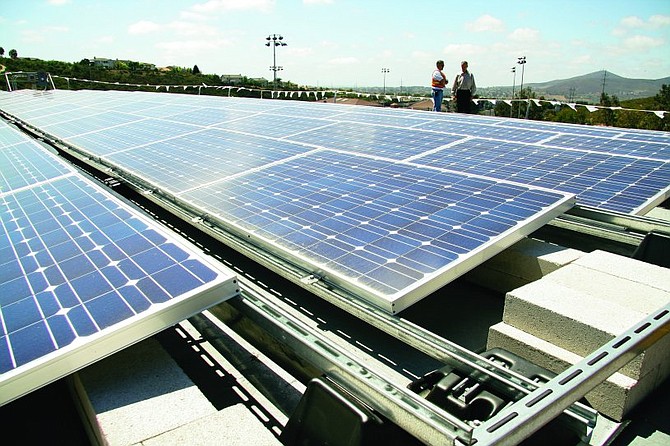 Facebook
Facebook
 X
X
 Instagram
Instagram
 TikTok
TikTok
 Youtube
Youtube

After a decline in new solar system installations in 2017, numbers are back on the rise in the first quarter of 2018, according to data released by industry data firm OhmHome.
California, which accounts for almost half of the nation's solar capacity, saw a 14 percent year-over-year growth in new residential system installations, despite changes in utility rates that make it more difficult for ratepayers to recoup the cost of their systems by reselling excess power generated during daylight hours back into the grid.
OhmHome credits rising real estate values and the emergence of on-site power storage as reasons customers are turning back to storage. Reaching out to local installers for comment it's the latter, along with the long-term downward trend in the cost of solar panels, that's driving growth.
According to stats from Go Solar California a project backed by the state's Energy and Public Utilities Commissions, the cost per watt of new solar generation stands at $4.31, down from $5.24 in 2015 and as much as $10 circa 2010.
"The average system size in San Diego is about 5,000 watts (5kW), meaning the typical cost would be $21,400 before any incentives," explained Daniel Sullivan, owner of Sullivan Solar Power. A 30 percent federal tax credit available through the end of next year, he adds, drops the net cost to under $15,000.
Battery backup, which can add another $6000 to the cost of the installation, is likely a necessary complement to new installations. Most buyers finance their system using notes ranging in length from 8-20 years, issued by specialty finance companies and some local credit unions.
"On December 1, 2017, SDG&E moved their 'on peak' window from 11 a.m.-6 p.m. to 4-9 p.m., meaning the time of day when solar customers get credited at the highest rates moved to later in the evening, when solar power isn’t shining," Sullivan continued. The change affects new solar customers dating back to mid-2016, when a "net metering 2.0" plan was implemented allowing the utility to pay different rates for excess power fed back into the grid based on the time of day it was supplied – older customers are eligible for a flat rate compensation structure.
Despite the changes to the detriment of solar, Sullivan says a system should pay for itself in three to six years.


After a decline in new solar system installations in 2017, numbers are back on the rise in the first quarter of 2018, according to data released by industry data firm OhmHome.
California, which accounts for almost half of the nation's solar capacity, saw a 14 percent year-over-year growth in new residential system installations, despite changes in utility rates that make it more difficult for ratepayers to recoup the cost of their systems by reselling excess power generated during daylight hours back into the grid.
OhmHome credits rising real estate values and the emergence of on-site power storage as reasons customers are turning back to storage. Reaching out to local installers for comment it's the latter, along with the long-term downward trend in the cost of solar panels, that's driving growth.
According to stats from Go Solar California a project backed by the state's Energy and Public Utilities Commissions, the cost per watt of new solar generation stands at $4.31, down from $5.24 in 2015 and as much as $10 circa 2010.
"The average system size in San Diego is about 5,000 watts (5kW), meaning the typical cost would be $21,400 before any incentives," explained Daniel Sullivan, owner of Sullivan Solar Power. A 30 percent federal tax credit available through the end of next year, he adds, drops the net cost to under $15,000.
Battery backup, which can add another $6000 to the cost of the installation, is likely a necessary complement to new installations. Most buyers finance their system using notes ranging in length from 8-20 years, issued by specialty finance companies and some local credit unions.
"On December 1, 2017, SDG&E moved their 'on peak' window from 11 a.m.-6 p.m. to 4-9 p.m., meaning the time of day when solar customers get credited at the highest rates moved to later in the evening, when solar power isn’t shining," Sullivan continued. The change affects new solar customers dating back to mid-2016, when a "net metering 2.0" plan was implemented allowing the utility to pay different rates for excess power fed back into the grid based on the time of day it was supplied – older customers are eligible for a flat rate compensation structure.
Despite the changes to the detriment of solar, Sullivan says a system should pay for itself in three to six years.
Comments